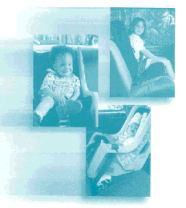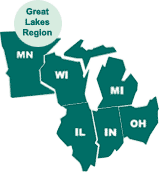
Traffic Digest

Child
Passenger
Safety
What You Should Know
How Child Safety Seats Work
- Every day children up to 12 years old sustain serious injuries or die in motor vehicle crashes.
- Many of these injuries and deaths can be avoided with the correct use of child safety seats and safety belts.
- When a child outgrows a rear-facing seat, the next step is a forward-facing seat, and lastly, into a belt-positioning booster seat that should be used until the child can fit properly in an adult safety belt.
- Many parents are unaware they are using the safety restraint incorrectly (or not at all), thereby placing their child at risk.
- The purpose of child safety seats is to reduce the number of child passengers killed or injured in motor vehicle crashes.
- The seats function by absorbing and safely distributing crash impact loads over the child's body while holding the child in place and preventing contact with the vehicles interior components or ejection from the vehicle.
Finding the Right Child Safety Seat
- Rear-facing Infant - Birth to 1 year and at least 20-22 lbs.
- Forward-facing - Over 1 year and over 20 lbs.-40 lbs.
- Belt Positioning Booster - Over 40 lbs. Ages 4-8, unless 4'9"
Every day children up to 12 years old sustain serious injuries or die in motor vehicle crashes. Many of these injuries and deaths can be avoided with the correct use of child safety seats and seat belts. Most child restraint laws cover babies and children up to four years of age or 40 pounds, and one-third of the state laws also protect children over six years old. When a child outgrows a rear-facing seat, the next step is a forward-facing seat, and lastly, into a belt-positioning booster seat that should be used until the child can fit properly in an adult seat belt. The purpose of child safety seats is to reduce the number of child passengers killed or injured in motor vehicle crashes. The seats function by absorbing and safely distributing crash impact loads over the child's body while holding the child in place and preventing contact with the vehicle's interior components or ejection from the vehicle. Many parents are unaware they are using the safety restraint incorrectly (or not at all), thereby placing their child at risk.
Great Lakes Region boasts of having 236 certified Child Passenger Safety Instructors and 7,566 certified technicians. Currently, there are 1258 fitting stations that offer assistance to parents as well as provide educational information on how to properly install a child safety seat and properly secure the children in it. The list of fitting stations is expected to increase as more technicians are trained. Child safety seat checks are conducted almost every weekend on various locations throughout the Great Lakes Region states. Partnerships between the certified technicians and specialty children stores as well as automobile dealerships have been developed. The automobile dealers offer a site to conduct child safety seat checks even in inclement weather.
To find out where fitting stations are in your state, please access the following web site:
http://www.nhtsa.dot.gov/people/injury/childps/CPSFitting/Index.cfmFor other Child Safety Seat information:
http://www.nhtsa.dot.gov/people/injury/childps/
| New England Region | Eastern Region | Mid Atlantic Region | Southeast Region | Great Lakes Region |
| South Central Region | Central Region | Rocky Mountain Region | Western Region | Northwest Region |

